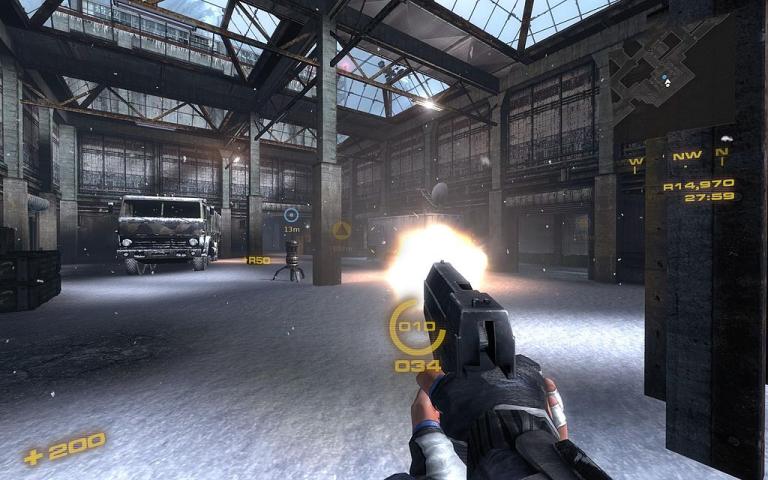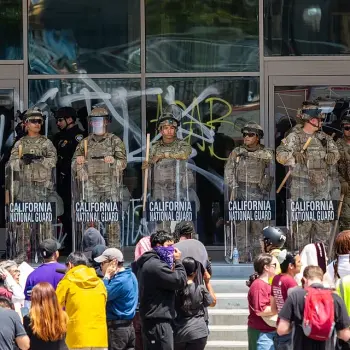Once again, children are gunned down while they go to school, this time at Uvalde, Texas.
Once more, we round up the usual suspects: the availability of guns, mental health, school security, the need for new laws. Those are certainly worth our attention.
But these don’t address the deeper question: Why would anyone do something like that? Obviously, there is something mentally wrong, but what, exactly? Some perverted anger, no doubt, but why would that manifest in shooting children? The killer this time didn’t seem to have anything against the fourth graders he murdered. It was nothing personal.
And that, I would suggest, is part of the problem. The killer didn’t see his victims as persons. They were objects. Targets.
They were like the figures in the games that I suspect the young man played over and over.
A good number of our most popular electronic games are “first person shooters.” The term comes from grammar: the “first person” singular pronouns are “I” and “me.” These games are presented from the point of view of the shooter, so that the player sees through his eyes. Thus, the games consist largely of the player walking through a realistic setting shooting people. Is it any wonder that sometimes–very rarely, to be sure–a disturbed individual who has trouble separating fantasy from reality might play the part of a first person shooter in real life?
I am not blaming video games, as such, for what happened in Uvalde–or Buffalo, or Chicago, or Indiana, or any of our other mass killing fields. They themselves are part of a bigger cultural phenomenon: the way we dehumanize each other.
Certainly most gamers can play the most violent of games with no harm done. Some say such games are a safe outlet for destructive emotions and so contribute to a peaceful society. And yet, nearly all of us–law abiding though we may be–are guilty of treating human beings as dehumanized objects, rather than empathizing with them as living, feeling, experiencing persons like ourselves.
This is evident in our politics–with its rhetoric, stereotyping, and polarization–and in our relationships, from family squabbles to conflicts at work. And it surely contributes to the well-documented problems of alienation and loneliness. If we don’t see the people around us as being like ourselves, of course we will feel isolated.
The way a culture entertains itself reveals much about that culture. Storytelling is the major way a culture’s values are transmitted. As educational psychologist William Kilpatrick has shown, children have always been taught morality by means of stories, as they learn to identify with and emulate heroes and draw away from villains and what they do. If children are fed instead with works of the imagination that teach them to identify with and emulate villains and draw away from heroes, that will impact them accordingly.
There are many ways beyond gaming that we recreationalize violence and cruelty (to coin a term). Today I read about plans for a slasher movie featuring Winnie the Pooh!
Some say that what we see on screens doesn’t influence us. And yet the internet, television, streaming services, and other media fund themselves by advertising–that is, by influencing us! If what we see on screen affects what we buy, why would we think it does not affect us in other ways?
To take another important example, there is abundant evidence that internet pornography is desensitizing and dehumanizing. Why wouldn’t that carry over even beyond sex, conditioning us to be less sensitive to others in general, whom we treat as less than human?
And then there is the depersonalization and dehumanizing inherent in the widespread acceptability of abortion.
These thoughts were occasioned by Kylee Zempel’s reflection on the shootings, A Culture That Celebrates Dismembering Children In The Womb Can’t Understand Why It’s Afflicted With Mass Shootings. Specifically, this:
Amid the Texas news updates and hot takes, a stomach-churning TikTok made the rounds on Twitter. In it, a young, pro-abortion mother cradles her infant and says in a sing-song voice to the child, “Hi, I could have killed you, but I chose to let you live,” then likening the killing of babies in utero to killing germs with hand sanitizer.
“Yes, I realize what I just said, and I stand by it,” she concludes.
If Uvalde, Texas, is a tree, this culture of death is the forest. This environment of nonchalant killing is the biome that incubates and grows the most inhumane of humans, who have zero regard for life and bear the nasty fruit of that moral indifference in the form of violence and rape and murder.
From our entertainment to our public policy, from our customs to our attitudes, ours is indeed a culture of death.
Illustration: Nuclear Dawn by InterWave Studios – http://www.interwavestudios.com, CC BY-SA 3.0 <https://creativecommons.org/licenses/by-sa/3.0>, via Wikimedia Commons














